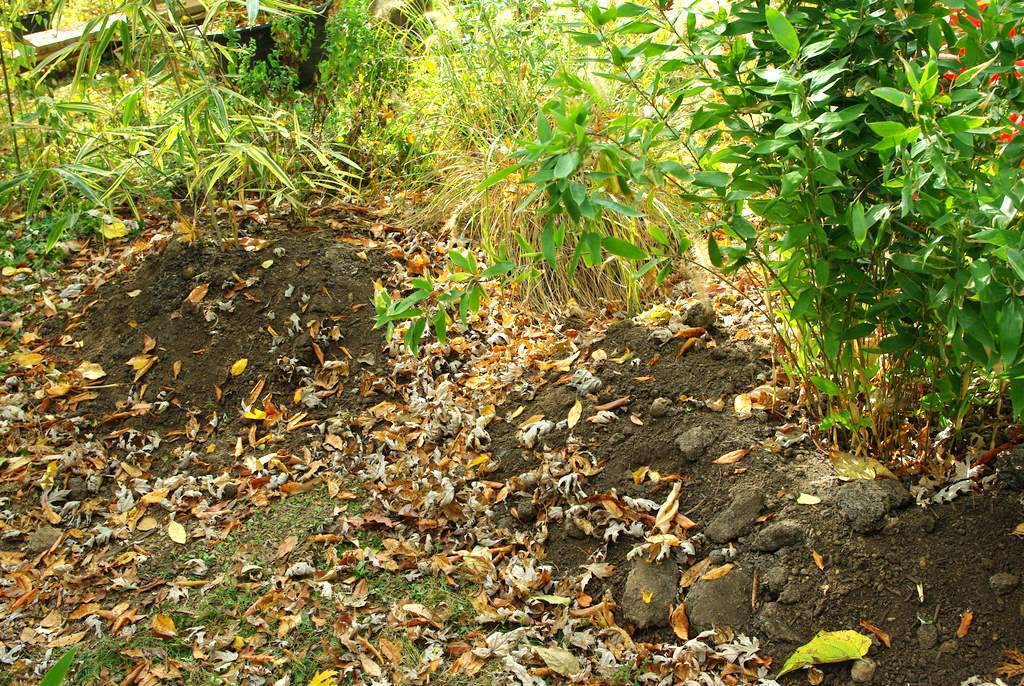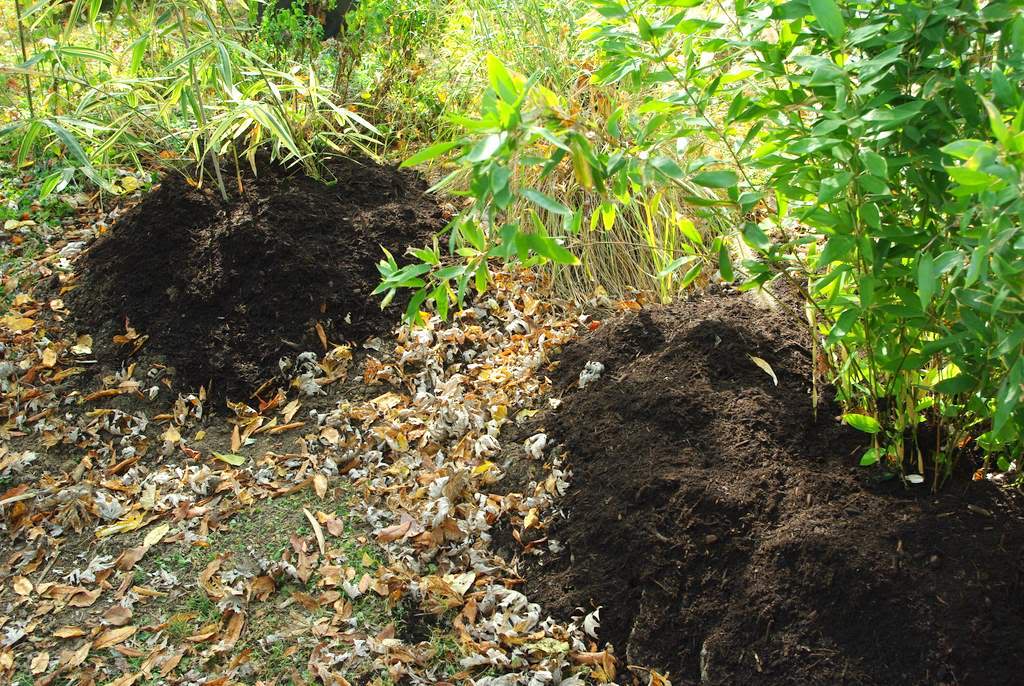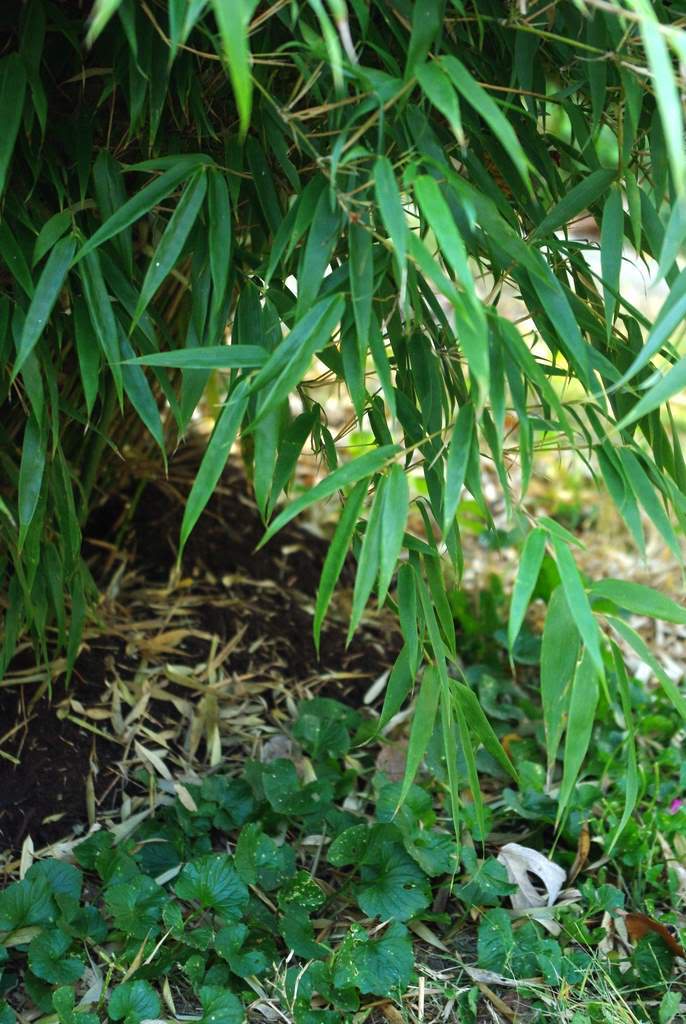I'm going to be mulching most of my in-ground bamboos and some of the other planting beds in a month or so, to provide them with extra winter protection. The wood chip mulch also helps to condition the soil, adding organic matter as it slowly decomposes. I always mulch my planting beds. Except this year, when I didn't add any new mulch. The old mulch was there, but I never got around to adding the fresh stuff.
For my bamboos, the first step in mulching is to add an inch or two of compost. This isn't really necessary, but I like to baby my bamboos, and compost is always welcome in my garden.
I wonder how many yards of compost I hauled this year? I'll have to total that up this winter...
The compost could probably be considered a short-term mulch in itself, but something with a coarser texture as a final mulch would be better. One of the main advantages with mulch is that it provides an insulating layer between the air and the ground where the roots are. If I used compost as my mulch the roots would eventually make their way into it, and there would no longer be an insulating later -- they'd be right at the surface again.
One thing I really like about pre-mulching bamboo with compost is that the dark, rich color really makes the bamboo stand out. So this:
Turns into this:
You want your plants to stand out? Mulch them! You want them to really stand out? Mulch them with almost-black compost!
I haven't yet decided what kind of mulch I'll be using this year, but I will probably get the free community mulch-pile stuff (generated by the city's tree trimming service) for the bamboos, and probably buy something more attractive for the more visible beds.
Of course with the free stuff, I'll need to mentally prepare myself for the spring onslaught of mushrooms. A lot of the tree-service trees were dead before they were chipped, and they contain a lot of fungus spores I've learned. That's not a bad thing though, because it doesn't hurt the bamboo, and I love taking photos of fungus!










No comments:
Post a Comment